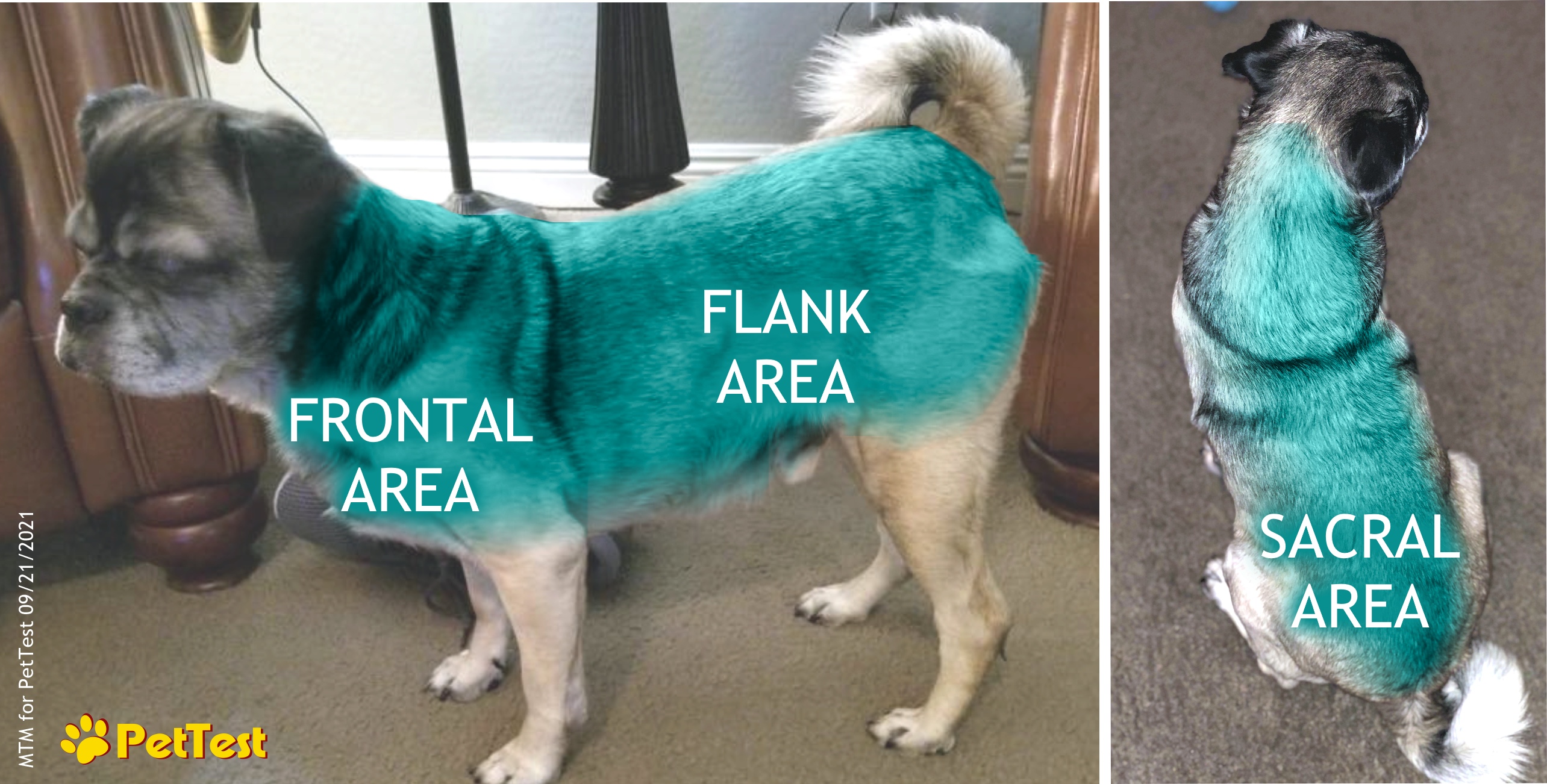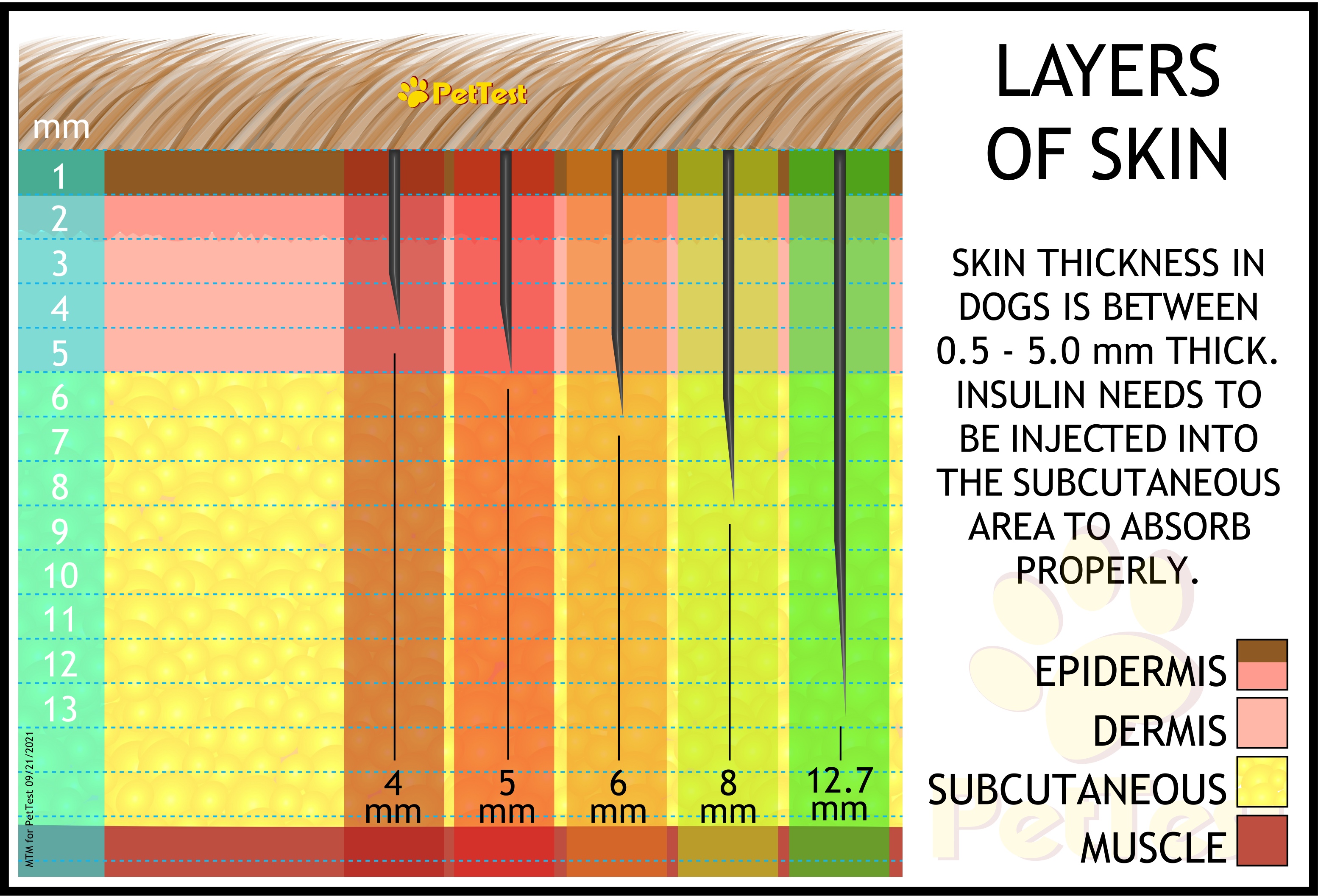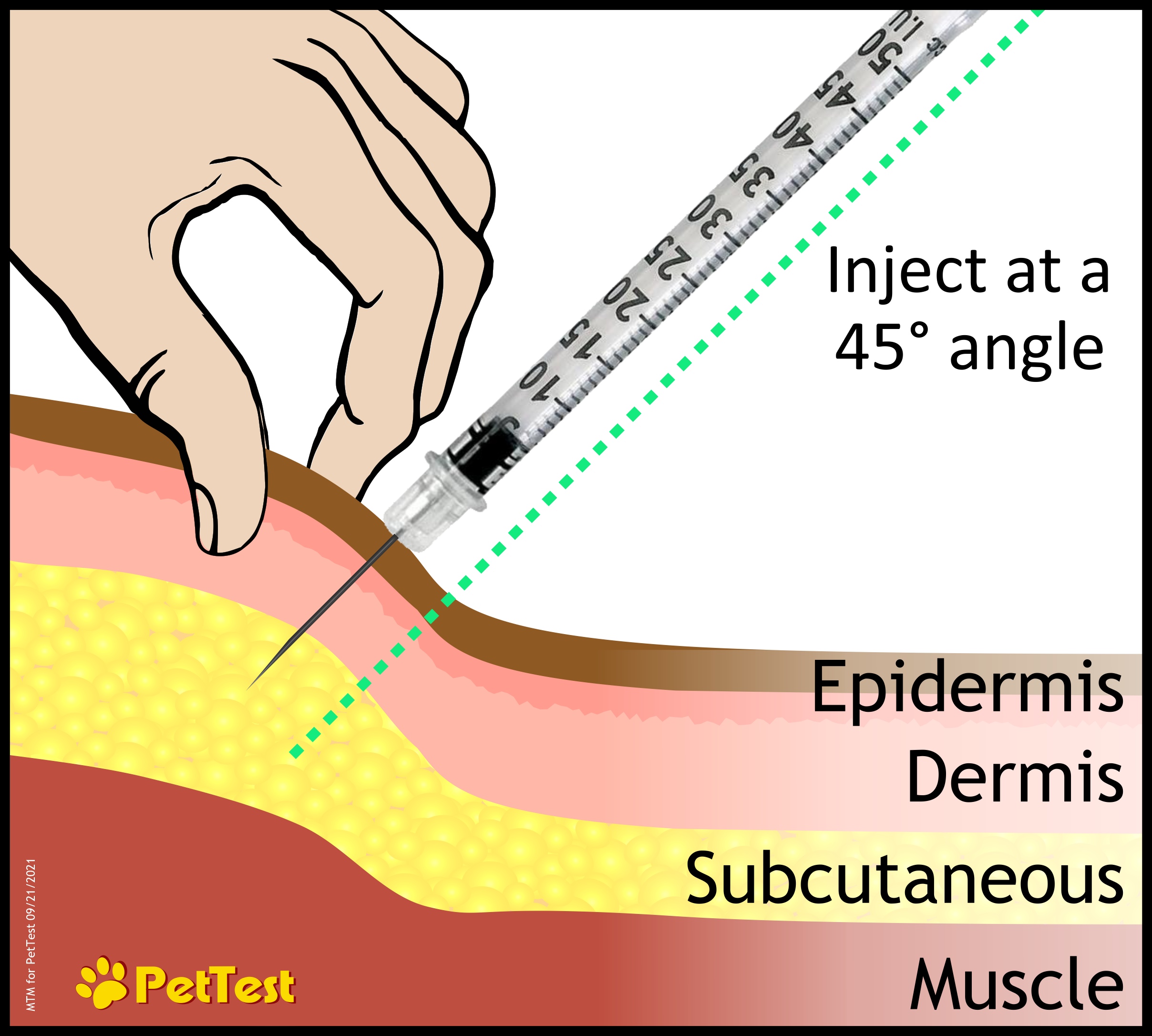Size Matters! The Importance of Needle Length
Being thrown into the world of diabetes and injecting insulin can be stressful. We get a crash course in handling, preparing and injecting insulin but we are not informed of certain details and the reasoning behind them. Something that is really important is the needle length of syringes; size matters and using syringes that have “short” needles has the potential to cause your dog harm. I am going to go over why we must use specific needle lengths. Grab a cup of your favorite caffeinated beverage and let’s get to it!
A dog’s skin is between 0.5 to 5.0 mm thick, the thinnest being the areas where fur does not grow. The flank, frontal and sacral areas are the thickest. Look at the picture below, the blue highlighted areas are thick areas…and you may have guessed it, some of these areas are where we inject insulin!

The flank area is where many inject and the sacral area is commonly used as well; it is recommended to inject at least two inches from the spine. The scruff should be avoided due to poor absorption rate and we do not suggest injecting in the frontal area.
Since the skin where we inject is thick and we need to get insulin into the subcutaneous layer for proper absorption, specific length needles are recommended. AAHA Diabetes Management Guidelines for Dogs recommends using 12.7 mm (1/2”) syringes.
The only two lengths that we recommend in our group are:
- 8 mm (5/16”) – 8 mm length syringes can be used in smaller dogs.
- 12.7 mm (1/2”) – 12.7 mm length syringes can be used in all dogs.
When short length needles are used to inject
insulin, insulin does not get to the subcutaneous area. This can cause poor
absorption; with poor absorption we see poor blood glucose control. Curves can
look like the dog is insulin resistant and higher doses of insulin are required
to get better control of blood glucose.

4-, 5- and 6-mm length needles, also called short needles should not be used for dogs. These lengths are human specific; humans inject in areas where skin is thinner than where we inject our dogs. As you can see in the graphic above, the 4- and 5-mm needles don’t do into the subcutaneous (SC) layer at all, and the 6-mm length just barely hits the SC layer.
Some people are nervous when it comes to longer needles, they are worried that they will hit muscle and cause pain. This is why we tent the skin when giving insulin! If you are tenting the skin and going in at a 45° angle you should not hit muscle. If you tent your dog’s skin, take your other hand and feel the area where you are injecting…there is no muscle there, it is only skin and the subcutaneous layer.

I hope that this blog has helped clear up any confusion regarding what length syringe to use for your sweet pup! I have included links to recommended PetTest syringes below…remember to use U100 syringes with U100 insulin, and U40 syringes are used for Vetsulin / Caninsulin and Prozinc.
Until next week, stay cool and caffeinated!
If you have any questions, comments or suggestions, please start a conversation below.
If you are looking for a Facebook community to join for support, I have proudly been an admin in Diabetic Dog Owners for almost five years. You can also join Canine Diabetes Support and Information on Facebook as well.
Be sure to join the PetTest family on Facebook and Instagram. PetTest has fun, interactive posts AND they have fabulous giveaways every week!
PetTest U40 Insulin Syringes, 31 gauge, 0.3 cc, 5/16" (8 mm)- holds 12 units of U40 insulin.
PetTest U40 Insulin Syringes, 31 gauge, 0.5 cc, 5/16" (8 mm) - holds 20 units of U40 insulin.
Advocate U100 Insulin Syringes, 30 gauge, 0.3 cc, 5/16" (8 mm) - holds 30 units of U100 insulin.
Advocate U100 Insulin Syringes, 30 gauge, 0.5 cc, 5/16" (8 mm) - holds 50 units of U100 insulin.
Advocate U100 Insulin Syringes, 30 gauge, 0.3 cc, 1/2" (12.7 mm) - holds 30 units of U100 insulin.
Advocate U100 Insulin Syringes, 31 gauge, 0.3 cc, 5/16" (8 mmm) - holds 30 units of U100 insulin.
Do you need a blood glucose meter kit for your diabetes arsenal? Click here to purchase one today!
For a printable version of this blog click here.

